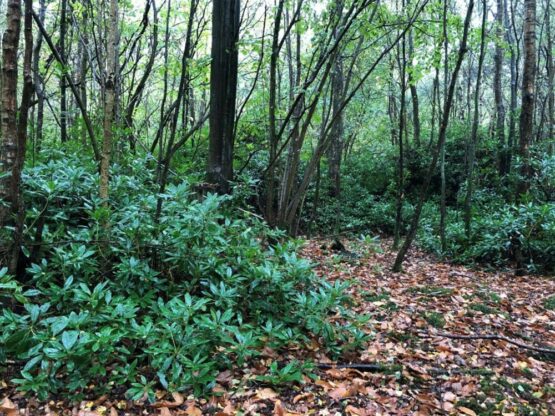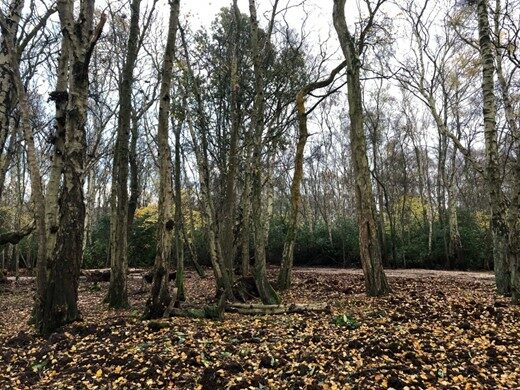Farming in Protected Landscapes Case Study:
Clearance of invasive rhododendron in Rookyard and Fredericks Woods

For Year 2 of the Farming in Protected Landscapes programme, Brick Kiln Farm in East Suffolk was awarded £7,924 towards clearance of invasive plant species to allow restoration of the native woodland.
Objectives
Dark and thick Rhododendron bushes which had taken over 2.8 hectares of ancient mixed native deciduous woodland. Oak and sweet chestnut standards, silver birch and hazel coppice are the native trees in Rookyard Wood, and along the neighbouring boundary in Fredericks Wood.
The woodland is recorded on the Priority Habitat Inventory for deciduous woodland and is also part of Dunwich Forest County Wildlife Site. It is thought to be over 100 years old.
Rhododendron will have been planted as game cover in the past, but clearance of this dominant and non-native invasive shrub will allow the landowner to start positive conservation management for the benefit of a wide range of wildlife. The advantages are:
- Reduced shading and creation of new rides and glades will allow for natural regeneration of a shrub layer. As the sunshine is able to reach the ground, low-growing flora will return allowing scrub habitat for breeding birds such as scrub warblers, siskin and woodcock, and notably red listed turtle dove which already breed and forage close by.
- Glades will provide sheltered basking areas and nectar sources for butterflies, such as white admiral, which are already recorded in adjacent Dunwich Forest.
- Sheltered ride edges will also allow for growth of honeysuckle, the foodplant of the white admiral and therefore allowing habitat for the lifecycle of this rare butterfly.
- This enhanced semi-natural habitat will be joined up to a mosaic of locally important habitats and this connectivity will create a great resource for wildlife, insects and birds. The area is close to Minsmere Reserve, a very important area for rare birds, such as stone curlew, nightjar and Dartford warbler.
The landowner worked alongside Suffolk Wildlife Trust and Natural England who supervised the contractors to cut and clear rhododendron, and burn new growth in selected open areas, away from mature trees to avoid damage.
Mature ‘feature’ trees, for example trees with cracks or holes that could provide bat roosting or bird nesting opportunities were marked up and maintained as habitat and standing dead wood was also maintained, as it is of benefit to saprophytic insects, although much of the cut wood has been removed as it allows for hidden Rhododendron shoots to re-emerge.
Follow up herbicide treatment was required to prevent re-growth of the Rhododendron with glyphosate application between October – February, in line with Forestry Commission guidance.

Dark and thick Rhododendron bushes which had taken over 2.8 hectares of ancient mixed native deciduous woodland

The woodland after the invasive species had been removed
